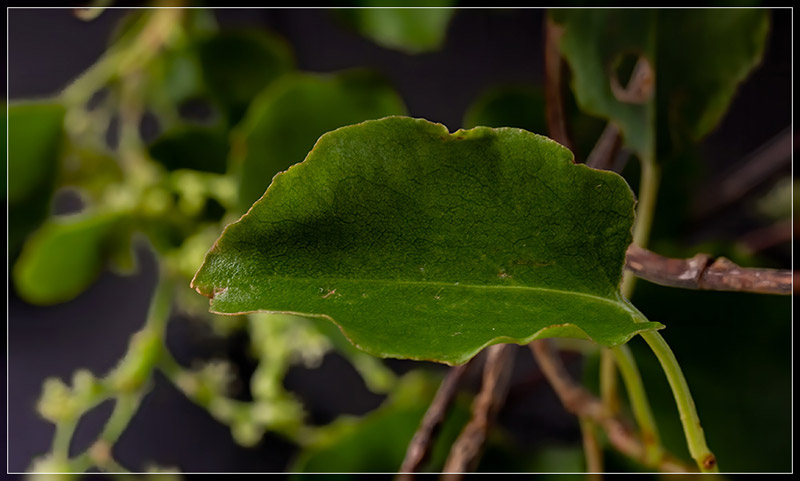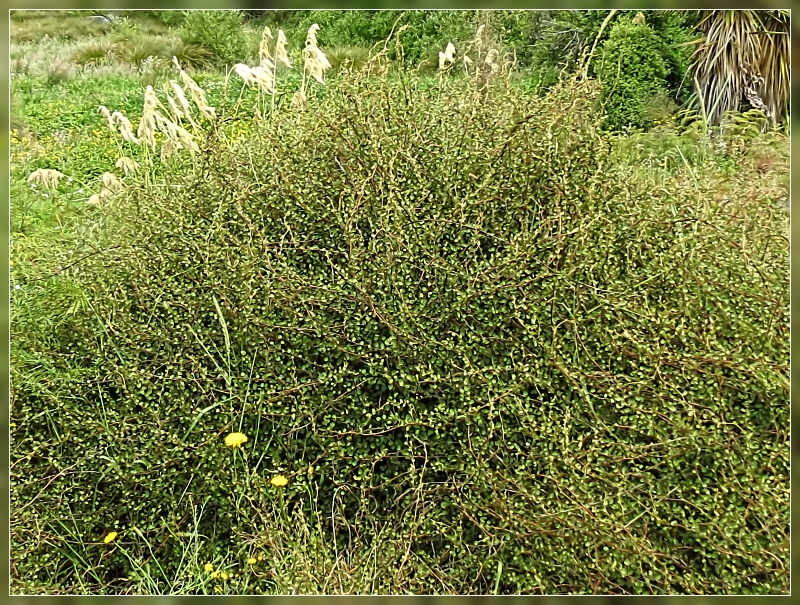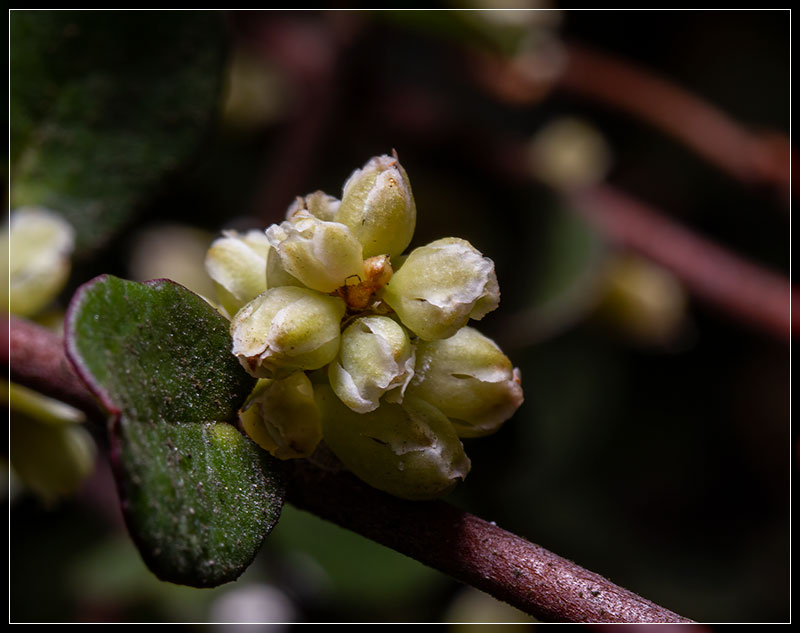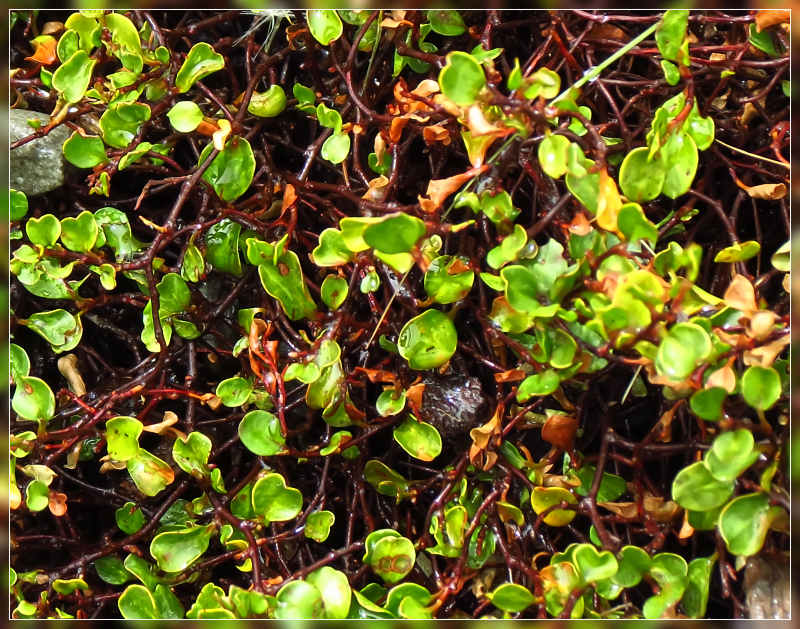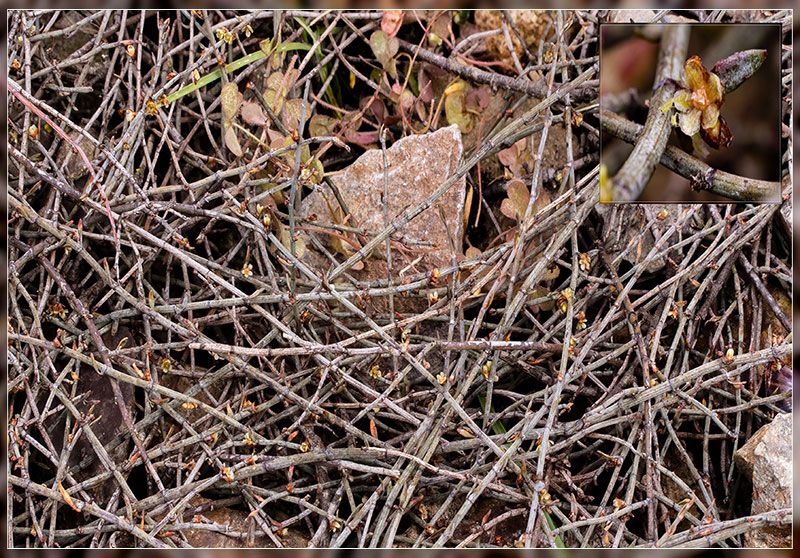Pohuehue, Muehlenbeckia at Travis Wetland
We are lucky at the Wetland to have habitats suitable for all five species of Pohuehue that grow in New Zealand; some of this genus of mostly climbers and scramblers are also found in Australia, South America and Papua New Guinea.
Our World Wetland day walk on 2nd February enabled us to see all five species!
Just off the walkway we sighted Muehlenbeckia australis; which is self established; the seeds having been distributed by birds. Plants climb through taller trees which provide support; it is both the largest growing and largest leafed of the species and hosts butterfly and moth species. They feed on the flowers and fruit, mine the leaves; a moth burrows into the stem which it enlarges then the moth pupates! Even the dead leaves that fall to the ground are food for the larvae of a moth. Higher up the plant provides a safe environment for nesting birds.
As we neared the Top Dune Viewing Seat sprawling and spreading widely, Muehlenbeckia complexa competes with bracken fern. It is one of our most common and dominant Pohuehue, providing birds, over 42 species of moths and butterflies as well as invertebrates with a plentiful food supply. Just as well it is not threatened, we need to ensure its survival.
Bushes quiver with life; Muehlenbeckia astonii is the only plant of the group to form a bush and is on the nationally endangered list. [This is because of habitat loss.] We noted its neater appearance along the track edge and the very large number of NZ praying mantis inhabiting the plants. Someone counted how many flies a mantis ate in a day, the total — 25! Bag moths, grasshoppers and other insects depend on the plants for their survival. It has masses of almost transparent, tiny whitish, juicy fruit. Flocks of birds can be seen feeding there when it is quiet! Lizards also use this habitat as their food supply is abundant!
Back by the Education Centre Muehlenbeckia axillaris thrives and is spreading on the drier Lizard Habitat. It hosts boulder copper butterflies as well as other moth and butterfly larvae. Further plantings are planned for the old dunes at Mairehau.
Muehlenbeckia ephedroides thrives also in dry conditions on the Lizard Habitat. It sprawls over the rocks looking barely alive because of its fine wiry appearance; it hides its exquisite tiny flowers to all but those with a keen eye; we have butterflies which are dependent on it. It is on the threatened plant list because habitat loss. More plantings of it are planned for Travis.
The importance of areas like Travis Wetland are absolutely necessary for survival of so many species and the Muehlenbeckia family of plants are one of the most important as they host large numbers of species. Travis Wetland can’t do it all. We need to ensure that there is space reserved for natural ecosystems to be interspersed throughout our city and suburbs to join up with our natural country side ecosystems.
Thank you to Geoff Henderson and Brian Patrick for your very informative contribution about Muehlenbeckia to the 2020 Canterbury Botanical Society Journal. This was very helpful when I was putting this presentation together.

